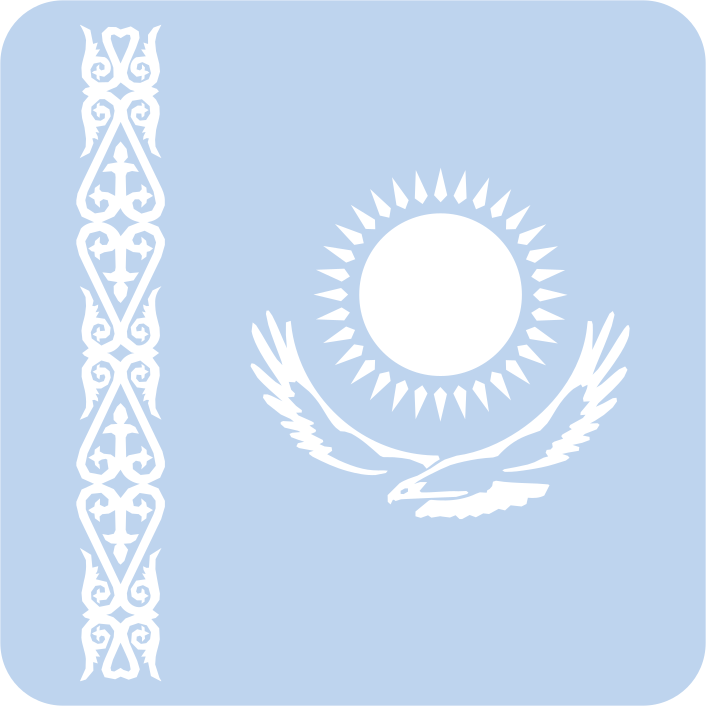
Proper funding is essential for enabling the timely disposition of cases, maintaining court services, and recruiting qualified judges and personnel. Countries have difference approaches to funding court services. Generally, judicial involvement with the budget process reinforces institutional independence and can insulate the judiciary from politics.
What is in the Budget?
The largest item in most judicial system budgets is personnel expenses: salaries and benefits for judges and court staff. Judicial system budgets also typically fund court infrastructure, information technology, training, and process-related expenses such as experts and interpreters.
Budget Models
In most countries, the executive branch – usually the ministry of justice -- prepares a general budget within financial guidelines set by the ministry of finance. In some countries, however, the supreme court (Kazakhstan), a judicial council (Ireland, Sweden and the Netherlands), or even individual courts may be involved in the preparation and negotiation process (Estonia).

Common Budget Models
- Zero-based: A new budget must be developed – based on requests from individual courts – and approved each year.
- Incremental: Each new annual budget is based on prior budgets. The availability of resources at the local and national levels is considered. The incremental system is helpful when national financial resources are limited. However, it may result in funding shortfalls that impact expenditures on infrastructure and staffing, as has been the experience in Croatia, Germany, and Moldova.
- Performance-based: Previous budgets are taken as a baseline and changes are based on demonstrated court performance and efficiency metrics. This system may also consider anticipated changes in caseloads. The Netherlands, Denmark, France, United Kingdom use this system, as do many state court systems in the United States.
Who Prepares the Budget?
Responsibility for preparing the judiciary’s budget may be assigned to the ministry of justice, an office within the supreme court, the judicial council, or a separate administrative office within the judiciary, as is the case in the United States federal (and some state) courts.
In some countries, the judiciary does not have a role in developing its budget. This is often the case in nations that limit the authority of court leadership. Courts have a high level of self-governance in other national judiciaries and court presidents have a key role in the budget process. If a performance-based-budgeting system is used, courts may be asked to prepare ‘activity plans’ that set forth policy, expectations for performance, and funding needs. Individual court activity plans may be used to calculate the judiciary’s budget at the national level.

Legislative Review
If the executive branch is responsible for preparing the judiciary’s budget, it will defend the proposal in the legislature. In countries where the judiciary has more autonomy, the heads of judicial authorities, such as the president of the supreme court or judicial council, may interact with the legislature directly. This is the case in the United Kingdom, France, and the Philippines.
In the case of the U.S. federal judiciary, representatives present a budget request to Congress, and it is sent to the legislative appropriations committees responsible for the judicial branch. These committees consider the request and decide whether to grant it in full or make adjustments. The request is then sent to the President.
The chair of the United States Judicial Conference Committee on the Budget, along with the Director of the Administrative Office of the US Courts, may testify and explain the request during hearings before the House Appropriations Subcommittee on Financial Services and General Government.
The Supreme Court of the United States has a separate budget. One or more of the justices may testify during budget hearings convened the House Appropriations Financial Services Subcommittee.
Allocation of Resources
In countries that use an incremental budget mechanism, the ministry of justice may allocate funds to individual courts without significant consultation about their needs. New budgets are based on the historical financial situation of individual courts, making this mechanism very simple: courts with the highest number of judges and heaviest caseload receive more funds. In some countries, including Belgium, the ministry consults with the judiciary during the budget process.
In countries that use performance-based budgets and court action plans, funds are often distributed through a judicial council, for example in Albania, Bulgaria, Croatia, and the Netherlands, or the ministry of justice, as is the case in Belgium, Germany, and Poland. These entities look to court performance objectives as well as human resource and infrastructure needs to distribute funds among individual courts.
Financial Management
The ability of individual courts to control and manage their finances usually reflects the level of self-governance and whether the judiciary has a its own staff of finance professionals.
In judicial systems with limited budget autonomy, the ministry of justice, supreme court, judicial council, or a specialized government agency manages and distributes funds. Court presidents and registrars do not play a role. These courts have limited authority to procure services and goods or to manage their funds. Court presidents and/or registrars must use formal procedures to communicate with higher judicial authorities or the justice ministry to request financial support or the purchase goods, such as office equipment. Though, even in systems with limited budget autonomy, individual courts may have small funds available for urgent needs (petty cash), as is the case in Palestine and Jordan.
In countries where the judiciary enjoys a high level of self-governance, the court president and/or senior court manager, supported by the court’s finance office, is responsible for the execution and management of the budget. This is the case in the Czech Republic, Denmark, Finland, and the Netherlands. These courts have the flexibility to allocate their funds for human resources and other needs. The court president executes and manages the budget, using the court’s strategic or action plan as guidance. In some countries, including the United States, a senior court administrator plays an important role, often leading this process.

Oversight
Accountability is an important feature of the budget process. The authority responsible for the budget (the ministry of justice, judicial council, or court administrator) is tasked with financial reporting, the preparation of revenue and expense statements, a balance sheet indicating all checking and reserve balances as well as special revenue, and the distribution of funds.
This authority may publish an annual report on about the judiciary that includes a section on the budget, sometimes in the context of court performance. In some countries (the Netherlands) both the Council for the Judiciary and individual courts publish an annual report.

Funding Specialized Courts
In some countries, specialized courts are funded by executive branch ministries, such as a (federal) ministry of labor and social affairs. This is the situation in Germany for the federal social courts and labor courts. In France, the Council of State safeguards the financial independence of administrative courts. In other countries, specialized courts are part of (and funded by) the executive branch.

Court Fees and Fines
In many countries, income generated by court fees and fines is returned to the national government. However, there are exceptions to this practice and partial or full court fees and fines can be used as a source of court funding, as is the case in Austria, United Kingdom, and Australia, sometimes becoming a significant source. They are collected through online payment systems, payment terminals situated in main entrance halls of court houses, or cashier desks for cash payments. Some countries generate additional income through the management of fee-based business registers and/or land registers (Croatia, Austria).
In the United States, there is a fee for Public Access to Court Electronic Records (PACER). This system is not funded by Congress; fees are needed to sustain public access to electronic records. Responding to growing public requests to eliminate these fees, in 2019 the Judicial Conference of the United States voted in favor of waiving fees for people accessing less than $30 worth of records per quarter.

Norms for Judicial Review
Courts need funding to meet national and international standards for efficiency and quality of justice. There are currently no international standards for funding judicial systems and many countries struggle to finance their court systems adequately. Economic downturns, budget cuts at the national or local level, natural disasters, and pandemics can trigger funding challenges.
Country Examples | |
 Bangladesh | Bangladesh's Law and Justice Division is responsible for the preparation of judiciary’s general budget, including the budget for the magistrates’ courts, the civil and sessions courts and special courts and tribunals. The Supreme Court of Bangladesh has a separate budget. |
 France | France’s Ministry of Finance prepares a general budget proposal to discuss with the Ministry of Justice. During the approval and adoption process, members of parliament meet with the director of the judiciary of the Ministry of Justice and the President of the Court of Cassation. Although the judiciary is not formally involved with this process, the President of the Supreme Judicial Council is interviewed. The first President and Chief Prosecutor of the Court of Appeal are the administrators of the judicial services within their jurisdiction. They act as secondary authorizing officers of court expenditures for first instance courts and tribunals. |
 Greece | Greece uses three different types of budgets to determine and allocate judiciary resources. There is a general budget for salaries and benefits, distributed by the ministry of justice. There a separate budget for court infrastructure and operational expenses. A special governmental agency is responsible for allocating funds to individual courts. Greece also has an innovation budget to finance special projects or programs, such as the development and implementation of a new case management information system. |
 Japan | In Japan, the Ministry of Justice is responsible for court administration including the budget. The Ministry’s Judicial Systems department is responsible for overseeing the judiciary. The Ministry also has a finance division that prepares, executes, and audits the judiciary’s budget. |
 Jordan | Jordan’s experience is similar to Morocco’s. The Ministry of Justice is responsible for the preparation and allocation of the judiciary’s budget and the Supreme Judicial Council has no fiscal authority. |
 Kazakhstan | The Supreme Court of Kazakhstan plays an important role in the preparation and execution of the national judicial budget as well as the distribution of funds to all levels of courts. The Supreme Court’s budget includes various components, such as housing for judges, operating expenses, the organization of judicial training and education, and capital expenditures related to courthouses. The Supreme Court has a finance department that posts financial reports and statements on the Court’s website (though restricted to the Russian and Kazakh language). |
 Korea | In Korea the National Court Administration is an entity within the Supreme Court that is responsible for all aspects of court administration, including all budget and finance matters. |
 Lesotho | In Lesotho, the registrar of the High Court also serves as the Chief Accounting Officer and oversees funds and expenditures appropriated by parliament. The country’s Auditor-General reviews judicial accounts annually and publishes an annual report outlining budget expenditures. The report is submitted to parliament and the Minister of Justice. |
 Morocco | Morocco’s judiciary is under the administrative control of the Ministry of Justice. This ministry is responsible for providing financial and management support to individual courts. Although in some countries, judicial councils play a significant role in the preparation and execution of the budget, Morocco’s High Judicial Council has no authority over the budget process. |
 The Netherlands | The Council for the judiciary is responsible for the preparation of the annual budget of the judiciary. The budget proposal is based on the Council’s review of the annual plans developed by the courts. These plans set forth budget needs and their connection to performance objectives. The budget proposal of the general jurisdiction courts is discussed with the Minister of Justice who either accepts the proposal or suggests minor modifications based on the availability of the state’s financial resources and finance model criteria based on a cost-per-case principle. The Supreme Court has an independent budget. |
 Nigeria | In Nigeria the National Judicial Council is responsible for receiving, processing, and disbursing all judiciary funds. The Council has a finance and accounts department as well as an internal audit department. |
 The Philippines | In the Philippines, the Chief Justice is responsible for the appropriations of the Supreme Court and the lower courts. As a part of the budget process, the Supreme Court, often through its chief court administrator, explains the budget proposal to the legislative House Committee on Appropriations. |
